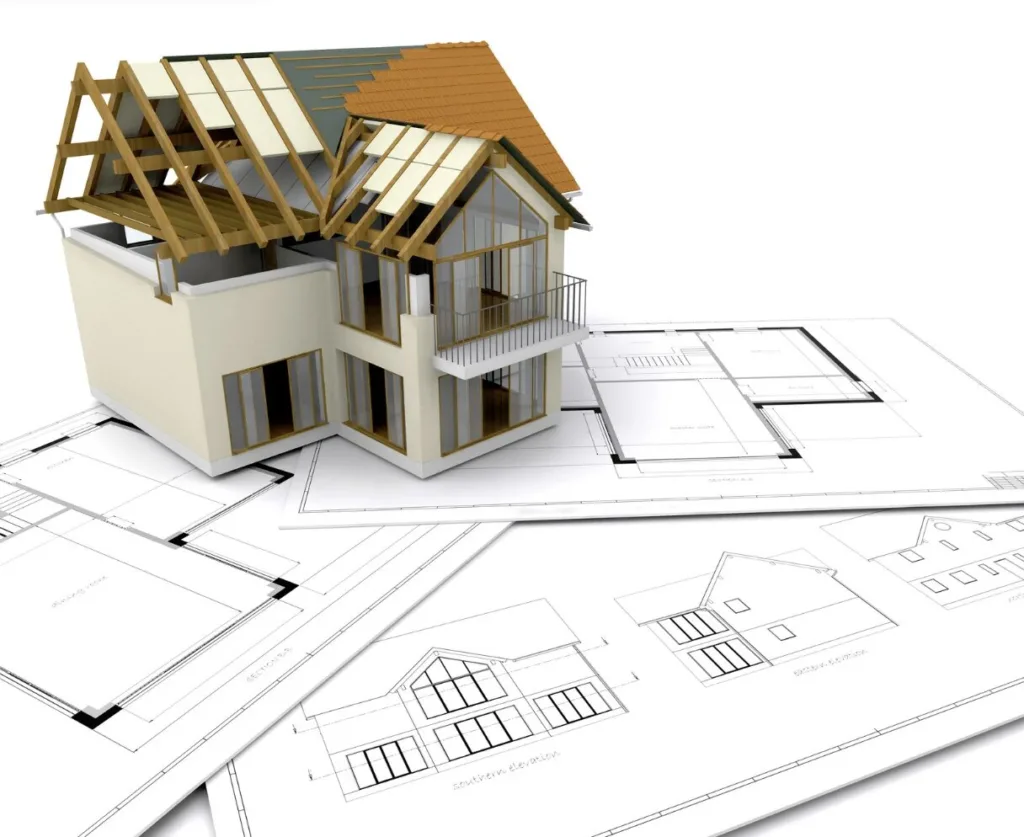When considering a home renovation or construction project, one of the most critical decisions homeowners face is choosing between a design-build approach and traditional construction. Both methods have unique advantages, and understanding them can help you decide which is best suited for your home renovation needs. In this blog post, we’ll explore these two approaches, highlighting their benefits, drawbacks, and the types of projects they best serve.
What is Design-Build Construction?
Design-build is a streamlined, collaborative process where a single entity—usually a construction firm or design-build contractor—is responsible for both the design and construction of a project. This method integrates architects, designers, and builders under one roof, creating a unified approach to the entire project.
Benefits of Design-Build
- Single Point of Contact: With design-build, you only need to work with one team throughout your project. This can simplify communication, streamline decisions, and make the project easier to manage.
- Faster Project Timelines: The integration of design and construction allows for overlapping tasks, which can speed up the timeline. Homeowners seeking fast renovation timelines may find this beneficial.
- Enhanced Collaboration: Since designers and builders work together from the start, potential issues can be identified early. This can lead to fewer surprises and smoother execution.
- Cost-Effective: With a single team managing both aspects, you may experience fewer delays and cost overruns. Design-build firms often have cost-effective project planning that can be ideal for those on a tight budget.
When to Choose Design-Build
- You prefer a collaborative approach with consistent communication.
- You’re looking for a faster turnaround for your renovation.
- You want to work with one reliable team for design and construction.
- Your project requires complex structural modifications where efficiency and clear communication are key.
What is Traditional Construction?
In a traditional construction model, also known as design-bid-build, the homeowner contracts an architect or designer first to create plans and specifications. Afterward, the homeowner bids out the construction work to contractors, who then use the finalized plans to execute the build.
Benefits of Traditional Construction
- Separate Expertise: Working with separate designers and builders may provide access to specialized talent and expertise. Some homeowners prefer the flexibility of hiring designers and builders independently.
- Increased Design Control: The homeowner may have more control over each phase, especially the design phase. This can be advantageous if you have a specific vision for your home that requires detailed customization.
- Transparent Bidding Process: By bidding the project out to multiple contractors, you may be able to compare bids and select the one that best fits your budget and needs.
When to Choose Traditional Construction
- You prefer separate design and construction roles and want a higher level of control over each phase.
- You have the time and resources to manage multiple contractors and ensure consistency.
- You value the ability to select different professionals for each part of the process.
Design-Build vs. Traditional Construction: Key Differences
| Feature | Design-Build | Traditional Construction |
|---|---|---|
| Process | Unified team handles both design and build | Separate contracts for design and build |
| Communication | Single point of contact | Multiple points of contact |
| Timeline | Typically shorter due to overlap of tasks | Often longer as tasks are sequential |
| Budget Control | More likely to stay on budget with clear, streamlined planning | Potential for cost fluctuations with multiple contractors |
| Best for… | Fast, efficient projects, with strong collaboration | Projects needing custom designs with a high degree of control |
How to Decide: Design-Build or Traditional Construction?
The choice between design-build and traditional construction ultimately depends on your project’s scope, complexity, and your own preferences for control, communication, and timeline.
Consider design-build if:
- You want a smooth, efficient process with a single team managing both design and construction.
- You’re looking for a budget-friendly option with minimized delays and fewer unforeseen issues.
- Your project demands a high level of collaboration and clear, frequent communication.
Consider traditional construction if:
- You have a detailed, customized design in mind and prefer working with separate architects and contractors.
- You’re comfortable managing different professionals and contractors and coordinating the process yourself.
- You value the option to get bids from multiple contractors, which may allow you to choose the best price for each phase.
Making the Right Choice for Your Project
Choosing between design-build and traditional construction can feel overwhelming, but understanding the strengths and trade-offs of each approach will guide you to the best decision for your home. At KC’s Improvement & Construction Co., Inc., we specialize in the design-build approach to offer our clients seamless service from start to finish. Our team of experts is here to answer your questions, provide guidance, and help you make the choice that best aligns with your goals, budget, and vision.
Contact KC’s Improvement today to discuss your project and learn more about how the design-build process could work for you. We’re excited to bring your renovation dreams to life with our proven approach, dedication to excellence, and commitment to client satisfaction.
www.kcsimprovement.com
336-288-2865
By: Keith A Crabtree


